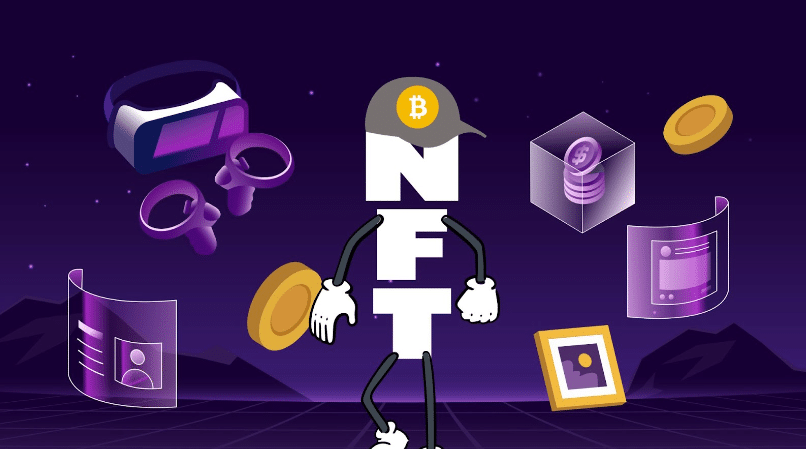
Non-fungible tokens, the long form of the acronym NFTs, is a concept that has been actively explored in the Bitcoin blockchain environment for several years now. While BTC has worked to come up with effective ways to implement NFTs on its blockchain, BSV, also known as the original Bitcoin blockchain network design or Bitcoin according to “Satoshi’s Vision”, has had live NFTs which have existed on the secure, fast and inexpensive platform for years.
What About Bitcoin NFTs?
Bitcoin NFTs have been somewhat of a trouble spot for the BTC blockchain. Dating back to 2014, the first official NFT, Quantum, was released on the first successful blockchain platform. This was 5 years after the launch of BTC when its founder, Satoshi Nakamoto, finished the original concept and launched the Bitcoin blockchain publicly in 2009. The flagship BTC NFT was a video that was moved into the blockchain environment as a special token which is referred to as non-fungible, essentially another way of saying “unique” or “one-of-a-kind”.
Since that first NFT was released on the BTC blockchain, many other attempts have also been made, but largely due to network inefficiencies, NFTs have not been very attractive and therefore relatively ineffective in drawing support and active engagement to the BTC network for the creation of non-fungible tokens and blockchain projects which predominantly use them. Not until recently, when a unique style of NFT with unique technology and underlying design, referred to as “ordinals”, were launched by their creator Casey Rodarmor.
What Are Ordinals, And Why Are They So Popular?
Ordinals are a type of NFT that is created by inscription instead of the traditional method of minting. Minting describes the process of bringing a non-fungible token into existence in the digital landscape. It can also be defined as publishing the non-fungible, unique token in the blockchain environment to be bought, sold and traded. Minting is synonymous with another similar process, minting coins, which defines how a metal or other material-based physical coin or token is created and brought into the public domain.
So instead of minting, Ordinals are inscribed on Satoshis where they are able to be bought, sold and traded in the BTC blockchain environment. Satoshis are the smallest unit of a Bitcoin ($BTC), so essentially the inscription process is the literal inscribing of a piece of data, such as a video, image, document, etc, which can be shared based on its place on the Satoshi. The process makes the finished product into a unique asset on the BTC platform so that the non-fungible nature of the NFT is kept intact.
The creator, Rodamor, explains creating the process just as much to exist as an archiving method on the BTC blockchain as for the typical use case in gaming and metaverse ecosystems. Ordinals were created just recently in 2022, and have just recently caught on with tens of thousands inscribed so far in 2023. Recently Ordinals were also launched on the Litecoin blockchain where they can be traded for its network token, $LTC.
While they are “hot” at the moment, ordinals are described by several blockchain tech professionals as a potential fad, as the process required to make them and transact is still in question as to its sustainability and survivability.
NFTs Have Long Been Available On Bitcoin SV
The Bitcoin SV blockchain network has supported the minting and trade of non-fungible tokens for several years already. This in and of itself is significant since BSV was in fact launched in 2018, 9 years after the BTC blockchain, with the clear mission to uphold and re-establish the original vision of Bitcoin’s founder. NFTs on the Bitcoin SV platform are known for being inexpensive to mint and trade. The efficiency of the BSV blockchain is to thank for this, as large block sizes and fast transaction speeds of under two seconds is the norm on Bitcoin SV.
This makes the use case for NFTs on the BSV platform multi-dimensional and dynamic. While common use cases in web3, metaverse and blockchain gaming ecosystems is certainly well-covered by the Bitcoin SV network, other uses are also effective and sensible due to the speed, security, scalability and inexpensive nature of non-fungible token minting and trade as well. Such use cases include entertainment and media related usage, identification security and authentication, ticketing for sporting events, concerts and other ticket-dependent business needs, in addition to just about any use case which requires tokenization.
The process of tokenizing assets and deploying them on the BSV blockchain is simple, efficient and cheap on the network. From unique digital assets to represent real world objects such as real estate or merchandise, stocks and other financial assets, BSV is leveraged for all such NFT-dependent propositions and transactions.
So, Where Should You Get Your Bitcoin NFTs?
While BTC has struggled for the past decade to come up with a sustainable NFT model that can be proven to last into the distant future, the BSV blockchain platform has exemplified for several years that non-fungible token support is not only sustainable, but scalable and efficient on its dynamic, fast and inexpensive network. There is no doubt that ordinals are trendy, fun, and engaging, as are all cool and new innovations, but the survivability of the inscribed tokens has yet to be seen.
What is evident is that several different businesses and economic models have chosen to use the BSV blockchain platform which enables the simple creation and minting of non-fungible tokens that can be used in a number of ways within the blockchain ecosystem design and operational process. From healthcare to finance, trading, gaming and more, BSV has been a go-to for many NFT-related propositions across a plethora of different market verticals.


Question & Answers (0)